|
| |
Black & White Photography - 2006 Book of the Month List
Every month in addition to a traditional focus on black and
white photography techniques and current trends in fine art photography,
Black And White Photography Magazine writes reviews of several
recently published books — and they select a Book of the Month from the 2-3
reviews each month. In order to showcase a few recommended photography books, we've taken the liberty to
collect the last year or so of these book reviews.
|
Book of the Month: 2006 |
|
November |
 Donata: Islands
of Silence
by Donata Wenders Donata: Islands
of Silence
by Donata Wenders
It always makes me nervous when the wife of somebody or other famous
brings out a book of their photography but this one is an exception.
Despite the fact that she spends a lot of time on film sets (or maybe
because she does), Donata Wenders' images are beautifully perceived.
They are almost all 'snatched' shots — a fleeting turn of a head, a hand
holding a cup, a child looking through a window — and as such, they have
both immediacy and intimacy. There are, inevitably, a few famous faces —
Jessica Lange, Michelangelo Antonioni, Wim Wenders himself — but they
are caught at a moment of un-self awareness, mid-gesture, from a
distance or very close up, which seems to capture the real person behind
the name. Equally, the 'unknown' portraits takes us beyond the exterior
— not an easy thing to define or to photograph. As with some other
photographers, Donata's images reveal more about her than they do of the
sitters — she is clearly fascinated by people and has her own unique way
of perceiving them. The pictures are dark, and often grainy, which
increases the sense of intimacy. It's a world of fantasy where daylight
rarely enters, where actors and dancers live out their roles and then
lapse back into themselves. Her decision to use black & white is
infallible, and makes these haunting images unforgettable. Reviewed by Elizabeth Roberts. |
| Amazon US |
Amazon UK |
Amazon CA |
|
October |
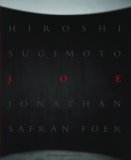 Joe
by Hiroshi Sugimoto (photos) and Jonathan Safran Foer (text) Joe
by Hiroshi Sugimoto (photos) and Jonathan Safran Foer (text)
When Hiroshi Sugimoto was invited to the Pulitzer Foundation for the
Arts, it was the beginning of an intriguing collaboration that arrived
finally as this very beautiful book. Instead of photographing, as he had
intended, the Pulitzer building, Sugimoto found himself fascinated by a
sculpture by Richard Serra that stood in the courtyard. It was entitled
Joe and is a torqued spiral that is designed to be walked around
and through, allowing a whole myriad of views which, naturally, Sugimoto
picked up on. His images reflect, rather than copy, the sculpture.
Having completed them he had the idea of commissioning text by a
novelist to further parallel the work — and this is where award-winning
writer Foer comes in. Also entitled Joe, his story weaves around
the images, playing with the idea of time and memory. The final stage
was to bring in Takaaki Masumoto to design the book. The result is
superb. I have long been a fan of Sugimoto's work and there is nothing
like seeing his immaculate, large scale silver prints in a gallery — the
images in the book come from prints that are 58x47 inches, but this book
is a sizable 15x12 inches — large enough to do justice to them. Reviewed by Elizabeth Roberts. |
| Amazon US |
Amazon UK |
Amazon CA |
|
September |
 Photos
by Wolf Suschitzky Photos
by Wolf Suschitzky
Photos
is a beautiful collection of pictures, revealing the varied career of
Wolf Suschitzky. Every image is warm and natural, the photographer
treating each subject, whether it be human, animal, object or building
with equal respect. The book is arranged with images from different
decades and countries, laid side by side, and frequently in contrast
with each other, but at the same time promoting similar themes. For
example, in a chapter entitled 'Loving Care' we see a dog with her
puppies and on the next page, a father and son in Trafalgar Square. This
book is an unusually tender piece of documentary of life of every kind.
Personal comments from Suschitzky explain what compelled him to take the
pictures. Often finding humour and love in the world around him, he
captures it, but does not seem to be intruding on any of his subjects — even in sensitive and intimate situations, the subjects appear
undisturbed by Suszhitzky's presence.
Photos
is not a chronological retrospective, but rather an illustrated
collection of themes, with each of the 170 photographs telling a
separate story. With a short autobiography, written commentary and more
extensive quotations from Suschitzky, we gain a more detailed
understanding of the photographer's ideologies and methods. This book is
beautifully presented and a perfect balance between insightful text and
enthralling images has been struck. Reviewed by Anna Hall. |
|
Amazon US |
Amazon UK |
Amazon CA |
|
August |
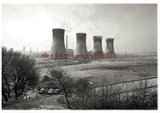 The British Landscape
by John Davies The British Landscape
by John Davies
It's surprising how often a large-scale hardback photographic book can
be a triumph of size over substance. Thankfully, as soon as I learned
this panoramic 40x28cm publication was a collection of John Davies'
photographs, I knew I wasn't going to be disappointed. To say that John
Davies is concerned with the landscape would be too vague a description,
and vague is not a term you could associate with his work. Although
The British Landscape
begins with Davies' images of Scotland and the Lake District, by plate
five it moves into the subject that has become the hub of his work since
1980 — the industrial and post-industrial landscape of the UK, and how
it fits in with the history of this nation. The high viewpoints from
where Davies composes his photographs give a sense of the enormous scale
of the scenes he is photographing, but this is never at the expense of
more intimate detail. This is thanks both to the fine resolution of the
images, where grain simply isn't apparent, and also to the fact that
there is often human activity taking place in the foreground. This might
take the form of a group of pigeon fanciers watching their birds take
flight, or several children playing in a graveyard, where the
'residents' overlook a flyover. Another huge plus point comes in the
form of the detailed and revealing captions to each picture.
Collectively, this chronology of photographs affords the viewer the
opportunity to see how the relationship of transport, industry and
habitation to each other — and to the landscape around them — are
inextricably interwoven. They give us a sense of waiting, and watching,
while the elements that make up our surroundings once more evolve slowly
around us. Reviewed by Ailsa McWhinnie. |
| Amazon US |
Amazon UK |
Amazon CA |
|
July |
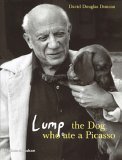 Lump: The Dog Who Ate A Picasso
by David Douglas Duncan Lump: The Dog Who Ate A Picasso
by David Douglas Duncan
As book titles go, this one is right up there with The Aesthetics of
the Japanese Lunchbox and How to Avoid Huge Ships, but if
you're after an entertaining and diverting publication forgive me if I'm
so bold as to suggest that
Lump: The Dog Who Ate A Picasso
might have the edge over the other two. The Lump in question was, at the
time these photographs were taken in the spring of 1958, a
three-month-old rambunctious dachshund. He arrived at Picasso's Villa La
Californie, Cannes, in the company of his owner, the photographer and
friend of Picasso, David Douglas Duncan. Lump immediately made himself
at home, exploring with equal measure of curiosity and terror the
garden's iron sculptures, encountering Yan the boxer dog and Esmeralda
the goat, and letting himself into the hallowed turf of Picasso's
studio. On the way, he met the likes of Yves Montand and Simone Signoret
as well as falling in love with Picasso's wife, Jacqueline, and becoming
firm friends with Paloma and Claude when they visited during the summer
holidays. In a succinct style that peppers the book, Duncan describes
Picasso as a 'one-man solar system powered by a single energy source —
work work work.' And yet here was a man who, despite his widely
documented brutality towards those who loved him, welcomed this puppy
into his home — not to mention his paintings — with an entirely
unexpected warmth and genuine affection. Lump is the motif in this book,
which is about far more than just a dachshund. It offers an
extraordinary intimate insight into Picasso's life and even goes as far
as reproducing the paintings in which Lump makes an appearance. And what
of the Picasso that Lump ate? Well, you'll just have to buy the book to
find out. Reviewed by Ailsa McWhinnie. |
| Amazon US |
Amazon UK |
Amazon CA |
|
June |
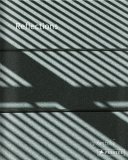 Reflections
by Norman Foster Reflections
by Norman Foster
Reflections is a stunning book, and one in which the architecture
and the photography are equally enjoyable. Obviously the likes of
London's Swiss Re building -- better known to millions as the 'erotic
gherkin' — and the new City Hall on the south bank of the Thames are not
to everybody's taste, but they are spectacular nonetheless. This book is
a tour de force of Foster and Partners' structures, from the Millau
Viaduct arching across the Gorges du Tarn in the southwest of France to
the Century Tower in Tokyo. Reflections spans the globe,
unveiling a huge range of forms with myriad functions. The images employ
a similarly thrilling mixture of styles to complement the built
environment, and the book is peppered with intricate studies of detail
and pattern, vistas of buildings within their environments and
atmospheric night shots. Reflections is architecture and
architectural photography at its best, and the medium of black & white
is a perfect foil to the structure and tone, the play of light and shade
that give these buildings their undoubted character. Reviewed by James Beattie. |
| Amazon US |
Amazon UK |
Amazon CA |
|
May |
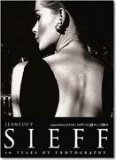 A Handful Of Dust: Photographs Of Disappearing America
by David Plowden A Handful Of Dust: Photographs Of Disappearing America
by David Plowden
The America that appears in these pages has been framed and captured by
a man with bittersweet emotions about his subject. Having first
documented the grocery stores and barns of small settlements back in the
1950s, photographer David Plowden returned to his roots to try and
record the human structures again before nature reclaimed them forever.
The result is both beautiful and saddening. 'I have always said that I
have been one step ahead of the wrecking ball,' suggests Plowden and,
looking at this book, you know just what he means. There is a feeling
that industrial cranes and diggers are hovering just outside of each
frame, read to 'modernise' by reducing history to a pile of rubble. The
communities disbanded due to the economical impossibility of their
situation seem just out of earshot. Though Plowden is clearly
disillusioned by what he finds, he photographs each barn, barbershop and
bank as though it were the most important building in the world. As a
result, each structure is bestowed a sense of pride and importance.
'Hundreds of years from now people looking at my pictures will see an
America that no longer exists, a foreign country as different as we
today perceive the country before the Civil War,' he explains. It's a
fascinating and moving account of an America slipping into the past. Reviewed by Tracy Hallett. |
| Amazon US |
Amazon UK |
Amazon CA |
|
April |
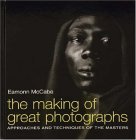 An Inner Silence: The Portraits of Henri Cartier-Bresson
by Agnes Sire and Jean-Luc Nancy An Inner Silence: The Portraits of Henri Cartier-Bresson
by Agnes Sire and Jean-Luc Nancy
The expectations one has about a book by Cartier-Bresson are inevitably
high ones, but I really wasn't prepared for such a selection of
relentlessly brilliant images such as these. Taken over a 50-year period
they are, to a large extent, what his reputation is built on -- and
deservedly so. There is, of course, always a fascination for seeing
pictures of famous people and here we have many a familiar name from the
20th century — Miro, Mauriac, Robbe-Grillet, Barthes — but what's more
interesting is that the images of unknown people — Joe the trumpeter and
his wife May, for instance — are equally compelling. This reveals
Cartier-Bresson's unique ability to draw out the person behind the
public face. Not something that is generally easy to pull off. It's not
just the subject matter, of course, that makes these images so
captivating — it's the quality of the photograph, from exposure to print
that produces the intensity. I should also mention the quality of the
paper the book is printed on, which is superb. As I turn the pages of
this book, I experience a sort of quiet awe, because every page reveals
yet another exceptional image. This man was good. Reviewed by Elizabeth Roberts. |
| Amazon US |
Amazon UK |
Amazon CA |
|
March |
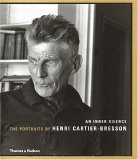 The Making of Great Photographs: Approaches and Techniques of the Masters
by Eamonn McCabe The Making of Great Photographs: Approaches and Techniques of the Masters
by Eamonn McCabe
Perhaps best known for his portrait and sports photography, Eamonn
McCabe spent 12 years as picture editor of The Guardian and is a regular
contributor to B&W. Armed with his extensive knowledge of all things
photographic, Eamonn has trawled the archives at the NMPFT in Bradford
in search of masters of the medium, and the stories behind their work.
The result is a wonderful collection of images, brought to life by
personal and lively text. Eamonn begins the book bravely by discussing
what makes a good photograph, and goes on to look at some of the
technological breakthroughs throughout the decades. The book is divided
into four chapters: documentary, portrait, landscape & architectural
photography, and art, avoiding the usual chronological slog. Each
photographer is afforded a spread with one image, a look at the approach
and technique behind the shot, and two boxes covering biographical
information, and, my favourite touch, suggestions on how to recreate the
photographers effects using modern techniques and methods. An inventive
and inspiring book. Reviewed by Tracy Hallett. |
| Amazon US |
Amazon UK |
Amazon CA |
|
February |
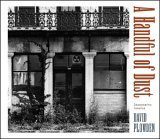 Jean Loup Sieff Jean Loup Sieff
The introductory essay to this collection is refreshingly
unpretentious. Jean Loup Sieff's guilty admission to taking photographs
simply for the pleasure of it is a welcome relief from the metaphysical
claptrap which can mire a lot of photographic writing, and sets the book
off on its light and enjoyable voyage through 40 years of photography.
Sieff was a prolific photographer whose work spanned the second half of
the 20th century. His images graced the pages of countless magazines
including Elle, Harpers' Bazaar, and Paris Match,
and the technically accomplished compositions that characterize the
fashion pages of such titles are very much in evidence here. While the
nature of his work means that it lacks the poignancy of many of his
contemporaries who shot reportage, such as Doisneau and Ronis, it
perhaps has a greater graphical impact because of it. With his images
arranged into decades you can see a clear progression in both the
fashions of the time and in Sieff's own style. While this book won't
quite capture your heart in the same way that a collection of reportage
might, it does provide a thoroughly enjoyable amble through the fashions
of post-war Europe as well as many strikingly beautiful images in their
own right. Reviewed by James Beattie. |
| Amazon US |
Amazon UK |
Amazon CA |
|
January |
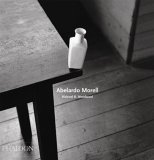 Abelardo Morell
by Richard B. Woodward Abelardo Morell
by Richard B. Woodward
The publicity blurb sent with the review copy of this book uses the
words 'spellbinding' to describe Morell's work and, for once, this
reviewer has to say that it's accurate. Particularly captivating are his
images of simple objects — a sun dappled table, a pile of books, or a
single pencil with its shadow. Somehow he seems to give them a presence,
it's as though we've never seen such objects before. One reason for this
— although I think it's by no means the only reason — is his knack of
skewing perspective by photographing from an unexpected viewpoint (when
his young son was born in 1986 he began photographing his house from a
child's point of view). But, ultimately, I think it's his 'vision'
that's so delightful. The book takes us from his early work, through his
camera obscura pictures and right up to the present day. If I can
get away with it (and I'm willing to to put up a fight), this will be
one that goes home tucked under my arm. Reviewed by Elizabeth Roberts. |
| Amazon US |
Amazon UK |
Amazon CA |
| |
|
For other book lists on photography, check out these pages on
our website:
|
